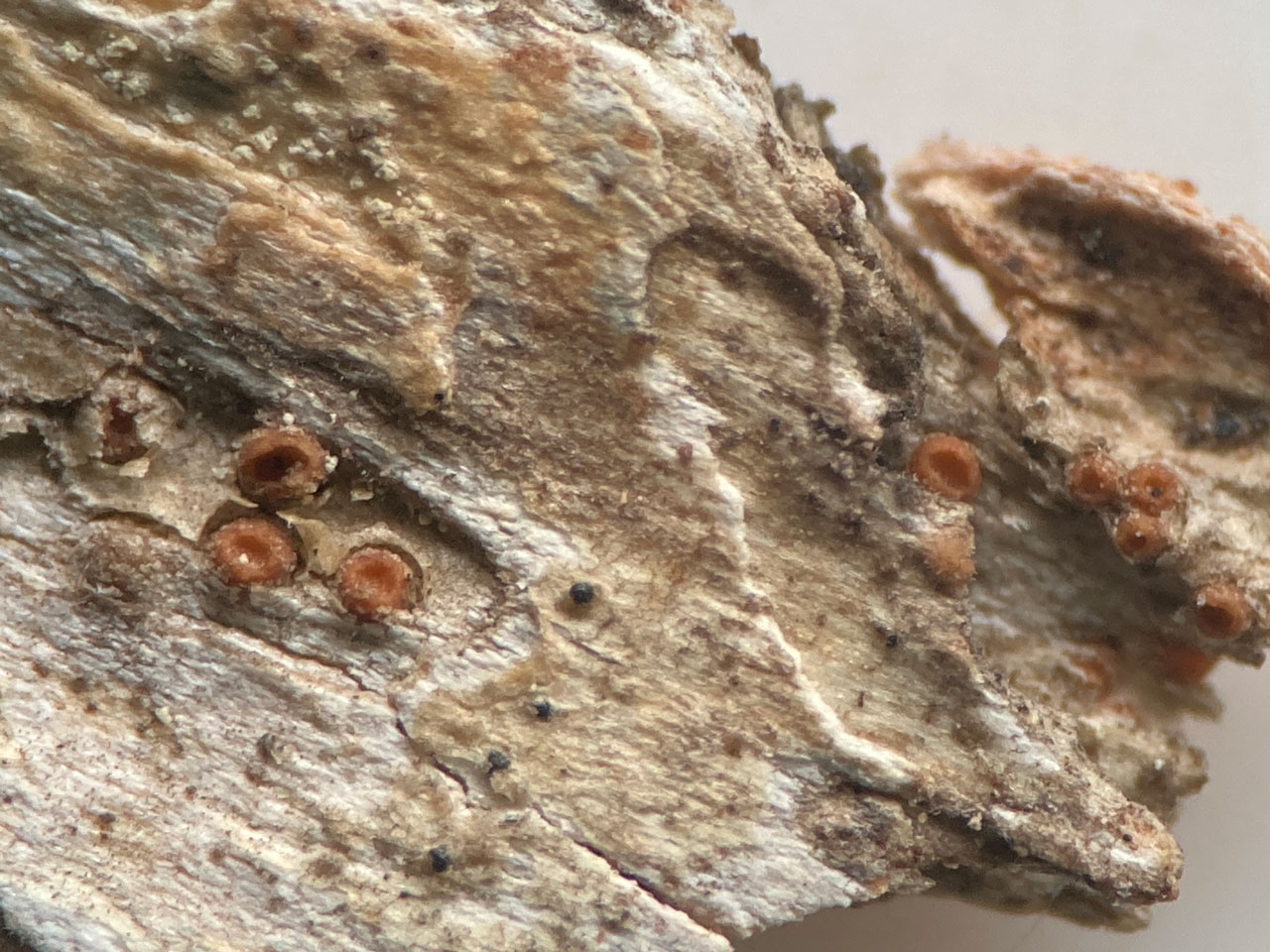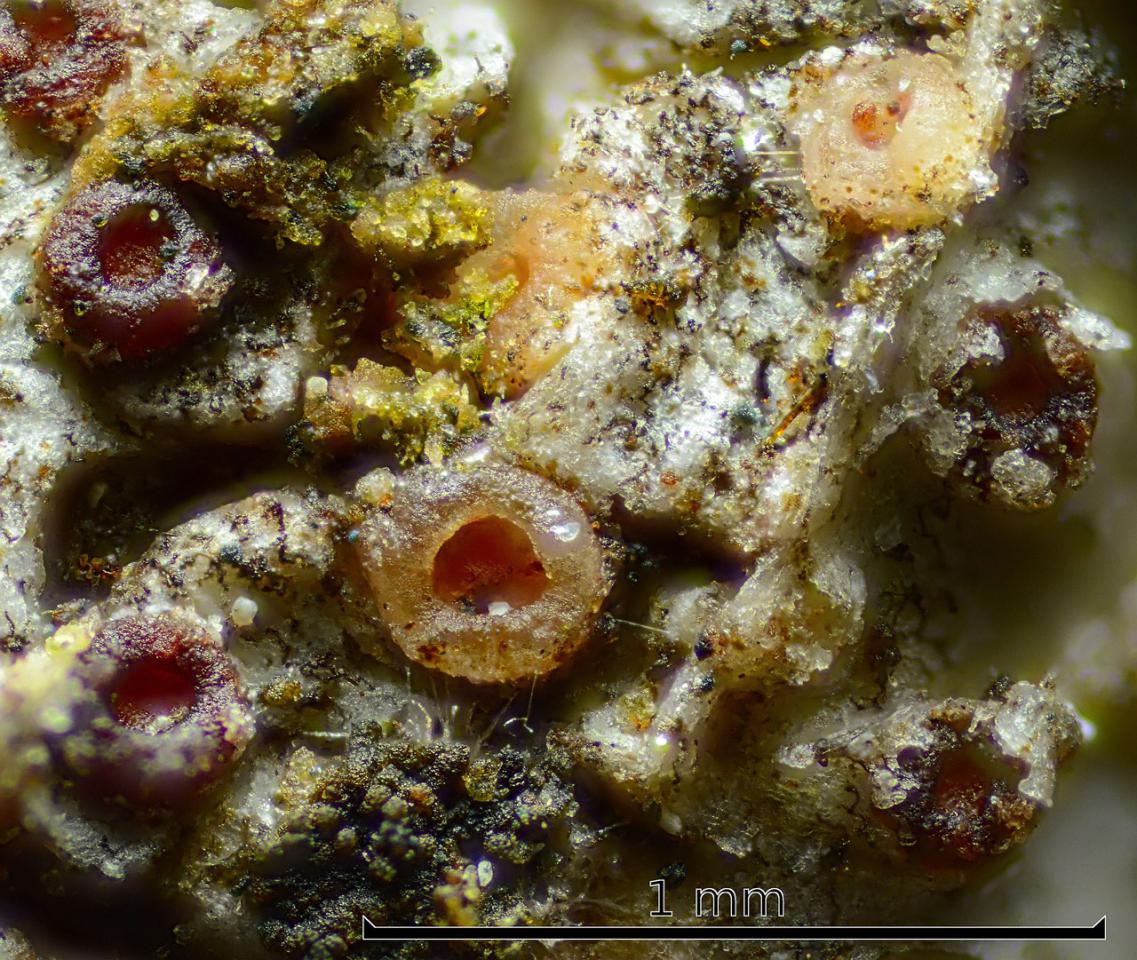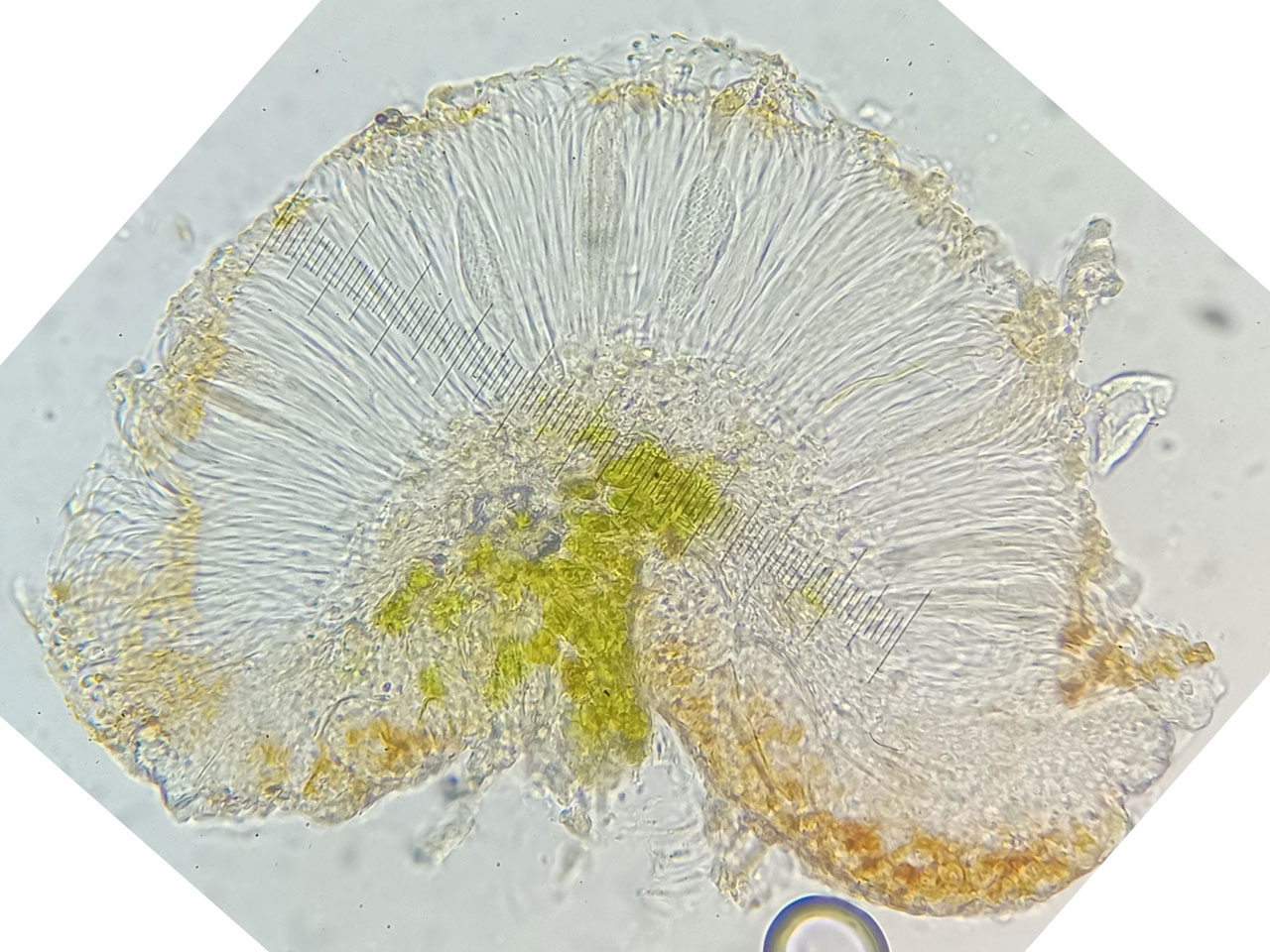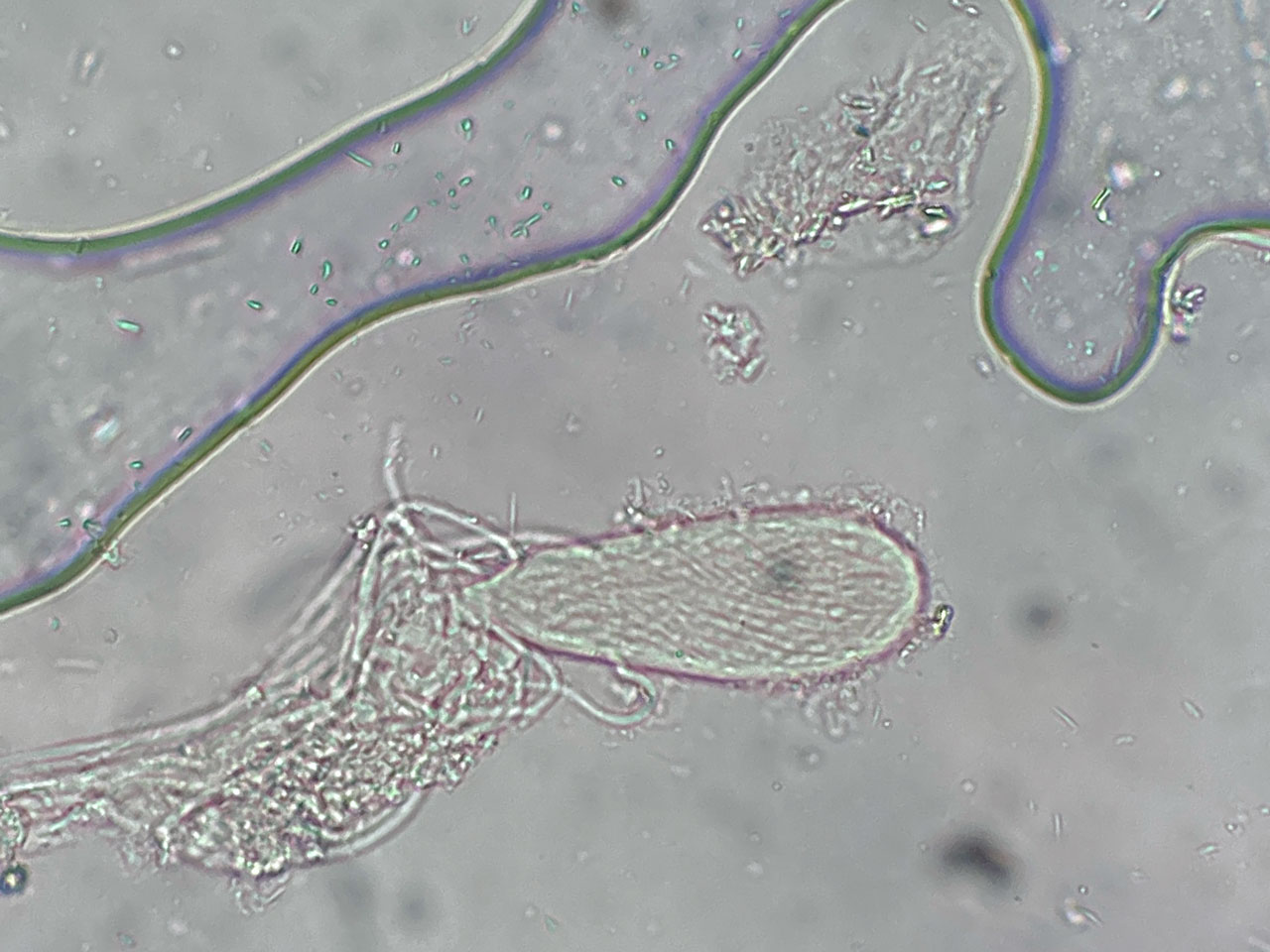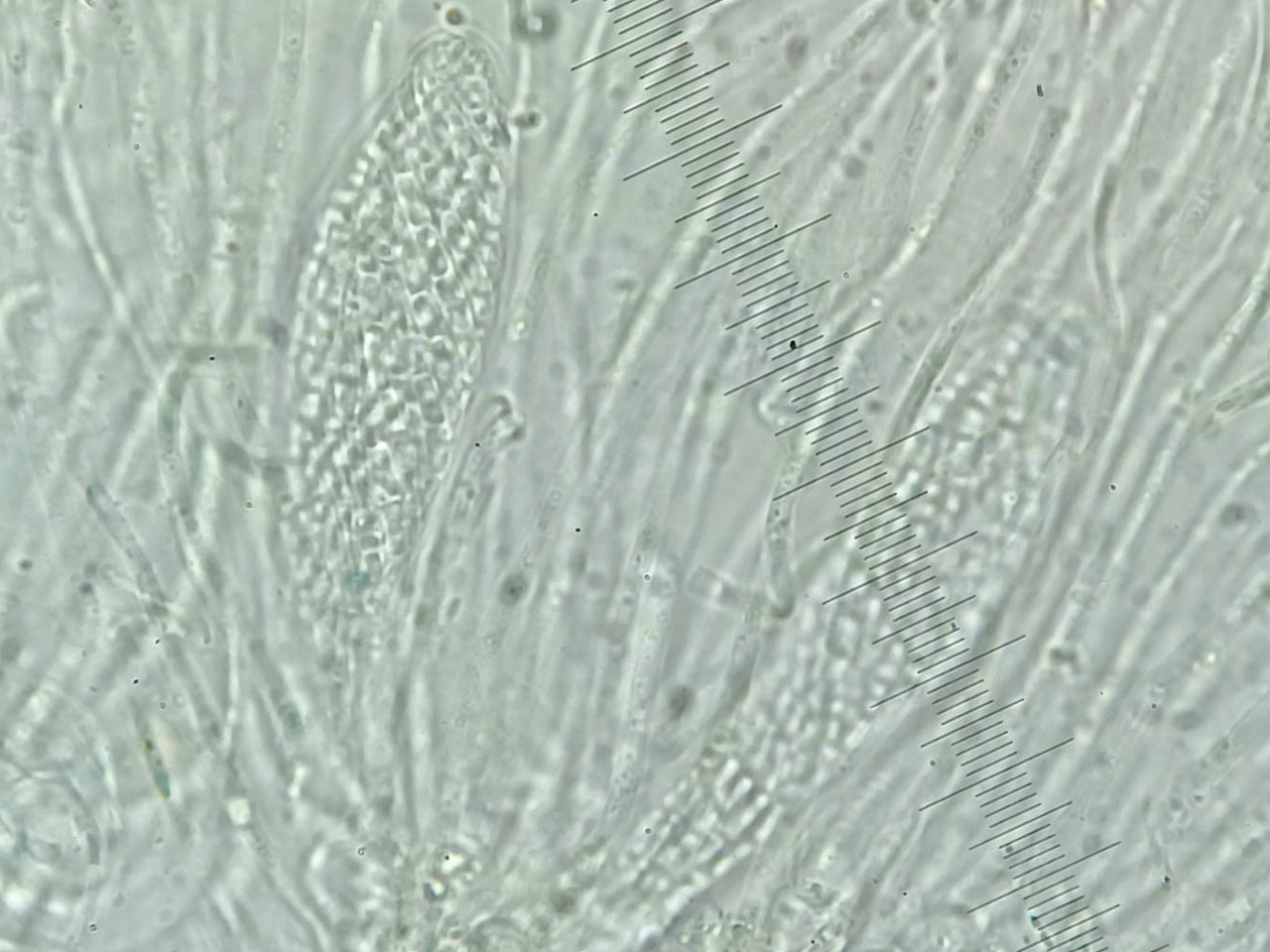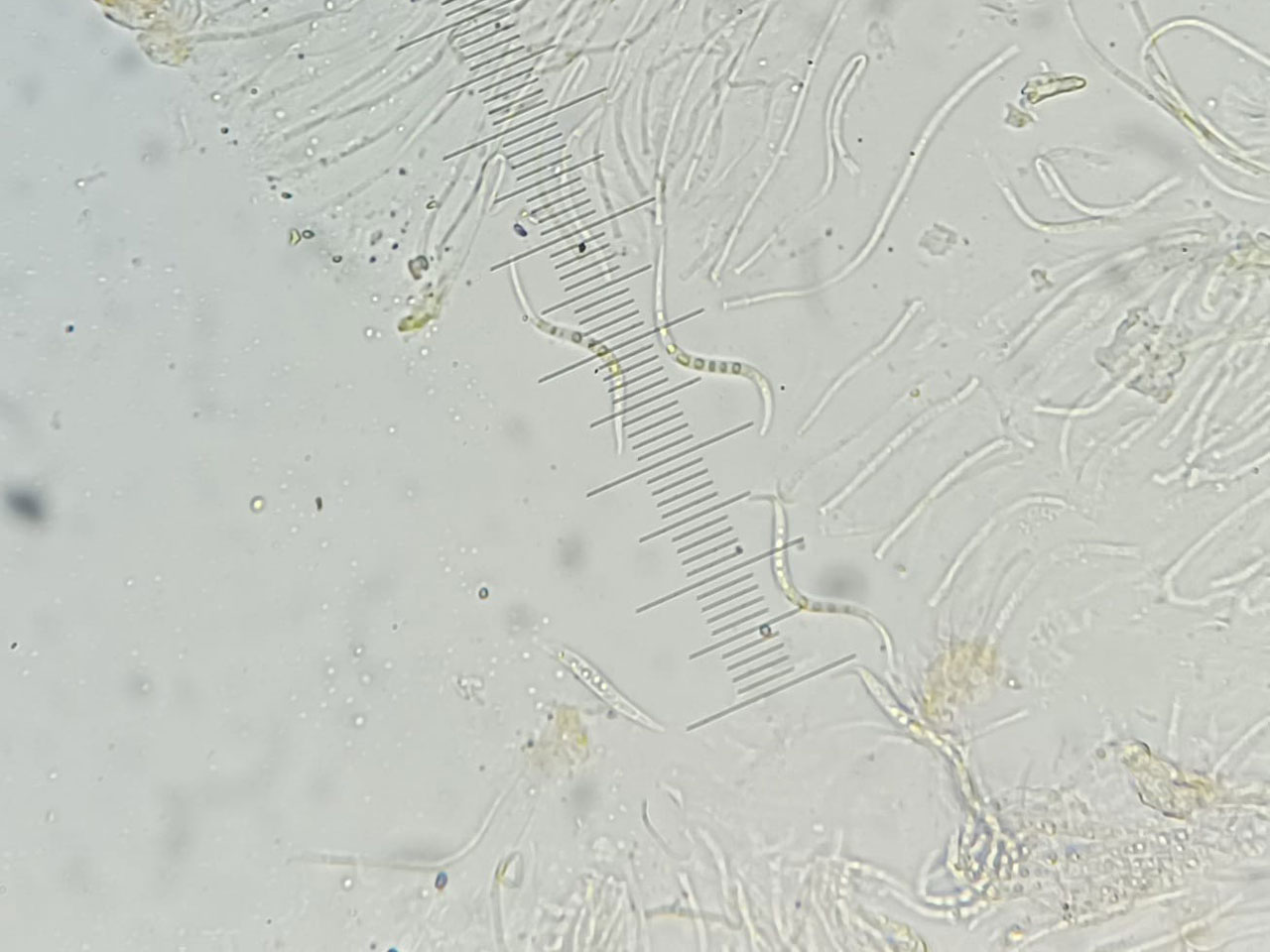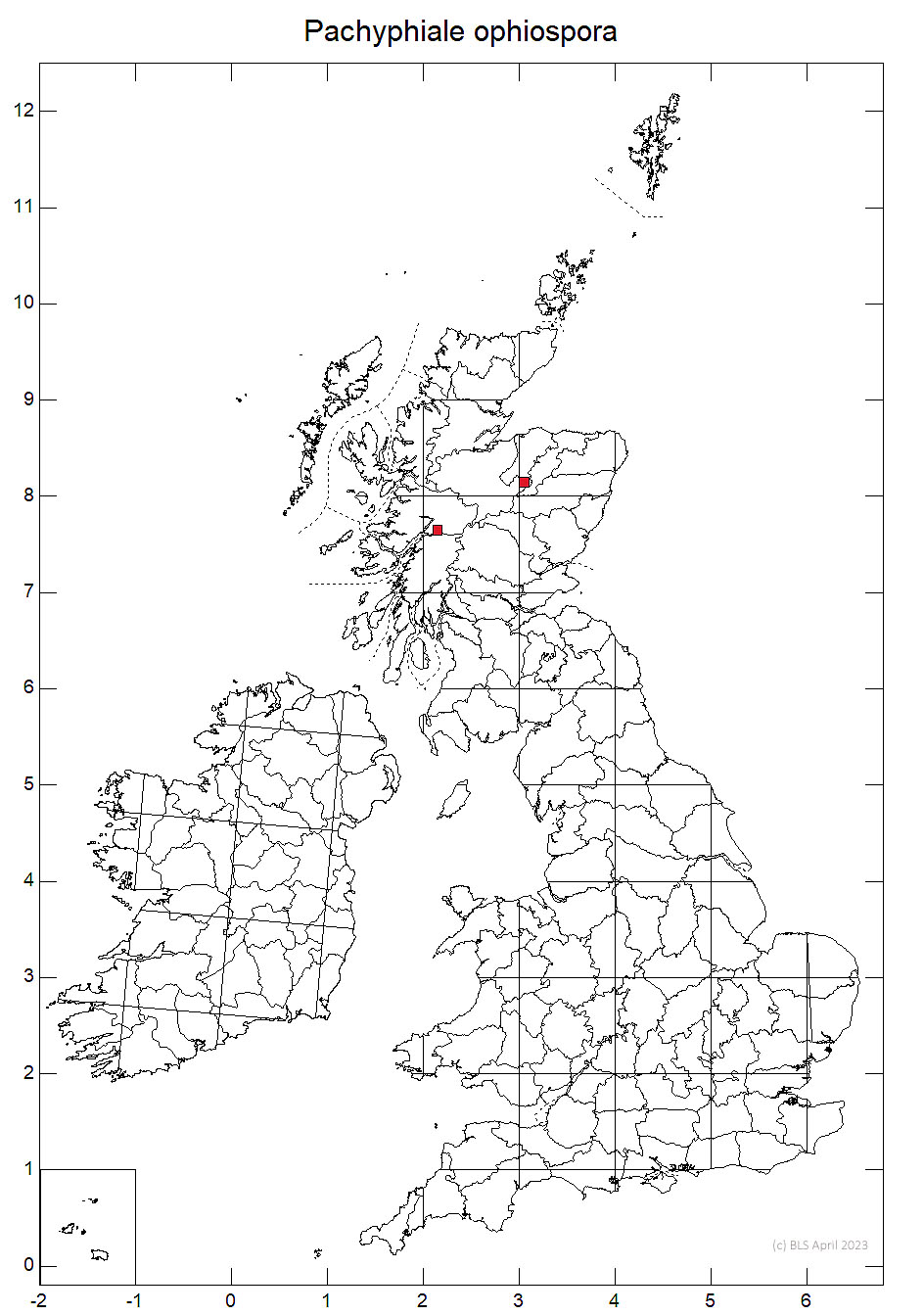This lichen is similar to Pachyphiale carneola, with but differs by its spirally curved ascospores that are helically arranged inside the ascus. A boreal species recently discovered in Scotland on a Pine in temperate rain forest within a ravine in western Scotland (W. Inverness) and on Birch in a sub-oceanic Birch stand within a native pinewood site in Speyside (Moray). Subsequently also found in central Wales (Radnor), so this lichens needs to be looked out for in upland woods generally.
Probably previously overlooked but likely to be rare and potentially threatened.
Similar to P. carneola, but with S-shaped ascospores that are helically arranged inside the ascus, 35–60 × 2–2.5µm in size, 7- (to 9-) septate. Little detailed information is accessible on its morphology.
Recently discovered and so far known from Scots Pine in a ravine pinewood in western Scotland (W. Inverness) and Birch in upland pasture woodlands in Speyside (E. Inverness) and in native Pinewood at the Blackwood of Rannoch (Mid Perthshire) and on Oak in mid-Wales (Radnorshire). To be looked for on more acid bark habitats than P. carneola.

So far recorded from the Scotish Highlands and mid-Wales, likley more widspead than this but rare.
Currently data deficient, but cetainly threatened.
Cannon, P., Coppins, B., Aptroot, A., Sanderson, A. & Simkin, J. (2024). Ostropales genera I, including Absconditella, Belonia, Clathroporinopsis, Corticifraga, Cryptodiscus, Cryptolechia, Francisrosea, Gomphillus, Gyalecta, Gyalidea, Gyalideopsis, Jamesiella, Karstenia, Nanostictis, Neopetractis, Pachyphiale, Petractis, Phialopsis, Phlyctis, Ramonia, Sagiolechia, Secoliga, Sphaeropezia, Spirographa, Stictis, Thelopsis, Thrombium and Xerotrema. Revisions of British and Irish Lichens 38: 1–60.
Text by Neil A Sanderson based on Cannon et al (2024)
